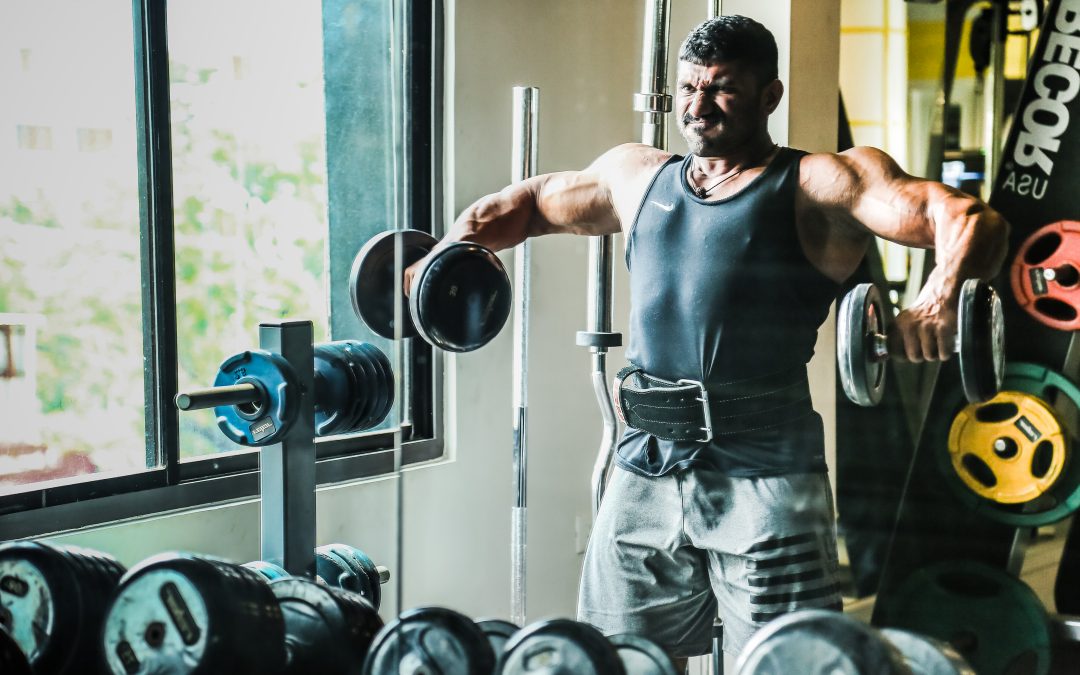All the teens step on the gym floor for one reason in majority – Muscular look. Though they have different goals and requirements, universally one thing that they want is muscles.
So before going into the workout charts let us analyze the basics of growth so that you can take up the workout program with confidence. Muscle Hypertrophy – is a scientific term for the growth and increase of the size of muscle cells. So, how does that occur?
Muscle hypertrophy depends on a lot of factors – in particular, The Workout (to break down the muscle tissue), Proper Nutrition (to repair the damaged cells) and Time to Recover (time to provide raw material for the muscles to repair and make it ready for the next workout).
What are Basic moves?
The moves like bench press, dead-lift and squats are known as the basics. Though chins, shoulder presses etc are also referred as basics, bench, dead-lift and squats form the basis of all bodybuilding and strength training programs.
Why should I stick to the basics?
The reason is really simple, with these three basic moves you can train almost all the muscles of the body. Bench presses for example do not train your chest alone, they train your pectorals (chest), deltoids, triceps, forearms and abs are also utilized to stabilize the body. So in a single exercise you can incorporate many muscles and maximum utilization of muscles in a single move is utilized.
Don’t copy workouts!!
My major concern about the beginners is that they tend to follow others workout easily. For them if they see a big guy in the gym, psychologically they feel that his workout is going to make them big. But it is not true. He might have many years of experience under his belt and could handle very high intensity and volume. But as a beginner, you should not get hypnotized with those guys but concentrate on your own workout. Learn the moves, progress in your lifts and build some muscles.
Warm ups
Before starting any physical activity warming up your muscles are very essential. Do some basic free hand exercises to get all the muscles and the joints ready for the lifts in your weight training session. The warm up can include neck rotation, hip rotation, shoulder rotation, bending and touching the floor and 5 mins of cycling. The advantage of warming up is that you get all the muscles and joints involved ready for the stress that they are going to withstand and avoid the chances of injury during the workouts. So don’t plunge into the weights directly. Dedicate few minutes to your warm ups so that you can really perform well in your workouts.
Starting a workouts
So now everything is set and let’s go into the workout program. For a person stepping into the gym for the first time, learning the moves and handling the weights are the most important aspect of the workout.
Workout #1
Exercise (Sets) x (Reps)
Flat bench press 3 x 10
Dumbbell over head press 3 x 10
Lat pull downs 3 x 10
Bicep curls 3 x 10
Pulley press down 3 x 10
Squats 3 x 10
Crunches 3 x 20
Workout #2
Exercise (Sets) x (Reps)
Inclined bench press 3 x 10
Lateral raises 3 x 10
Dead lift 3 x 10
Hammer curl 3 x 10
Triceps extension with dumbbells 3 x 10
Leg press 3 x 10
Hanging knee raises 3 x 10
SCHEDULE
MON Workout #1
WED Workout #2
FRI Workout #1
So for the first six weeks of your workout you can follow this program. You will be training your muscles three times a week but with different movements.
The workout described above should be completed well within 35 mins. Just concentrate on handling the weights and learning the movements during these six weeks.
How much rest can I take between the sets?
As a basic thumb rule take rest till your breathing comes to normal and proceed with the next set of your exercise. This won’t take longer than a minute in general.If possible you can move even faster from one exercise to the other. And as you progress you will be able to reduce the rest between sets even further.
After finishing this workout take a five minute rest and do 15 mins of light cardio activity. The cardio activity can be a speed walking or moderate speed training on the elliptical machine etc.
If you consume 1g of protein per pound of bodyweight along with good quantities of carbohydrates and fats (provided the total calorie count is more than the amount of calories expended during the day) you will be adding a couple of pounds to your bodyweight in a week’s time.
This workout will help you in developing the strength & stamina and the control over weights. Wrong form can lead to injury. So don’t hesitate to check with your personal trainer in the gym about the form of each exercise.
Let us discuss about some of the routines and splits such as push-pull splits, upper body – lower body splits and some example intermediate workouts in Workout for beginners – PART II.
The workouts provided can be followed as such or some minor modifications can be done to them to suit the availability of equipment and weights in the gym. But emphases should always stay on the compound basic movements.
